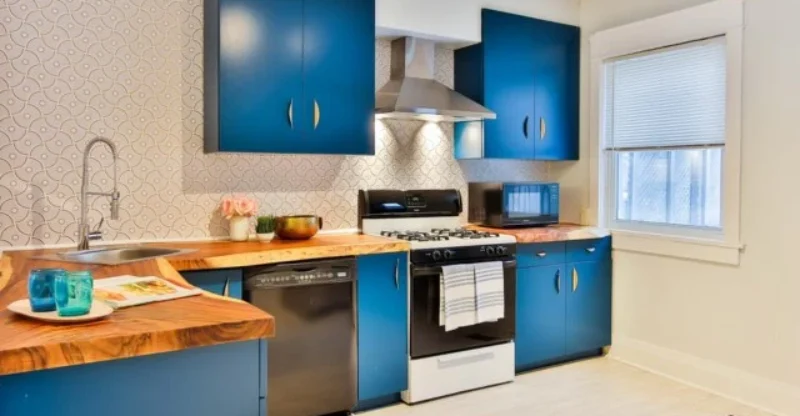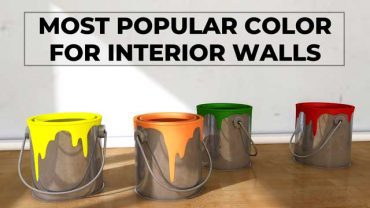How to Build a Kitchen From Scratch: A Step-by-Step Guide
Are you ready to turn your house into your dream home? You can do this by starting with a kitchen design from scratch. Whether it’s a big kitchen remodel or creating a new custom kitchen, we’ve got you. This guide will show you step-by-step how to make your dream kitchen.
Building a kitchen from scratch is a big but fun task. It requires a good plan and the right help. You’ll learn how to figure out your needs and what you want.
We’ll guide you through everything, step by step. This covers all aspects of making a custom kitchen. It doesn’t matter if you’re building a new home or updating a kitchen; this guide is for you.
Ready to start your new kitchen construction project? Let’s jump in and look at how to build a kitchen from scratch.
1. Assess Your Needs and Wants
To start creating your dream kitchen, look at what you already have. Decide what’s vital for your new space. Note down what you must have, like appliances and countertops. Consider your cooking needs, such as more prep area or extra storage. This will guide the kitchen design process.
List Essential Kitchen Elements
List the things you need in your kitchen. Also, think about how you’ll use the space. Do you cook for a lot of people or just a few? Identify what parts of your kitchen cause problems.
This could be insufficient storage or a layout that needs to be fixed. Knowing your lifestyle helps shape the kitchen to fit your needs.
Consider Your Lifestyle and Cooking Habits
Next, after understanding your kitchen’s current state, jot down the most essential elements for your new design. It would help if you considered a big island or top-notch appliances. Decide which features matter most to you. This step is critical in ensuring your new kitchen is just right.
Determine Must-Have Features
Figuring out what you need and want is vital when designing a kitchen. By taking your lifestyle into account and focusing on crucial features, you’ll be set to create the perfect kitchen.
2. Plan Your Kitchen Layout
The first step is to determine what your kitchen needs. Then, you’ll make a detailed plan that includes every detail of your kitchen. This plan helps you see how everything will fit and where changes might be needed.
Create a Detailed Outline
Now that you have an outline of your kitchen think about the best layout. There are six standard layouts: U-shaped, G-shaped, L-shaped, galley, island, and peninsula. The one that’s right for you depends on your kitchen’s size, how many people will cook, and how you want to move around.
Choose the Right Floor Plan
If you need significant changes, like adding an island or removing a wall, now’s the time to plan for them. Start with your kitchen outline. Then, try out different designs to see what works best. Make sure your kitchen’s flow and use will be smooth.
Consider Structural Changes
Planning carefully helps your new kitchen blend in perfectly. Make sure it works with the space you have. This way, your kitchen will not only look good but also be very functional.
3. Research Materials and Appliances
Now that you have your kitchen plan, it’s time to look at materials and appliances. It would help if you looked at different countertops like quartz, granite, and laminate. Think about what’s most important to you, such as how long it will last, how to take care of it, and what looks good in your kitchen.
Explore Countertop Options
Laminate and stone, like quartz and granite, are popular countertop choices. They also make acrylic materials such as Staron. These materials come in different thicknesses. It’s good to weigh the benefits and drawbacks of each to find what suits your kitchen.
Select Cabinet Materials
After countertops, it’s time to consider cabinets. You can choose from solid wood, particleboard, and others. Each has its own cost, look, and use. Think about what best matches your plan and budget.
Prism TFL is a top choice for making cabinets. It should be around 15mm thick for the central part and 18mm for the doors. Knowing these numbers helps you design a kitchen that’s practical and affordable in the future.
Choose Appliances and Fixtures
Now that you’ve picked counters and cabinets focus on appliances and fixtures. Figure out what you need, like an oven or dishwasher. Look into different brands and sizes. Remember plumbing and lighting. They set the tone in your kitchen.
Appliances come in various sizes, from 30cm to 100cm. Make sure they fit in your design. Choosing the right ones makes your kitchen work well for cooking and hanging out.
4. How to Build a Kitchen
Starting a kitchen from scratch involves planning, design, and building work. You’ll learn everything needed, from demolishing old parts to adding new structures to installing items like cabinets and countertops.
The first move is to tear out the old kitchen parts. This means taking out cabinets, countertops, and any old appliances. After that’s done, a new layout will be framed. This might include making space for a new island or moving walls.
Then, it’s time to work on the kitchen’s electrical and plumbing systems. At this stage, new outlets, wires, and plumbing fixtures will be added. It’s important to work with professionals to get these parts right so the kitchen runs safely and efficiently.
When the electrical and plumbing are in place, cabinets and countertops go in. Planning where these will go is crucial based on how you’ll use the kitchen. Use high-quality materials for cabinets, such as Prism TFL, and choose strong countertops like quartz or granite.
The last steps include adding lights and cabinet hardware and finishing the floor. All these final touches matter a lot. Check everything is done correctly. This step-by-step guide ensures you end up with a kitchen that’s beautiful and fits your style and needs well.
5. Design Your Dream Kitchen
Are you getting ready to plan your new kitchen? Now’s the time to think about how you want it to look and feel. Start by making a mood board.
It’s a mix of pictures, materials, and other things that show what you want your kitchen to be like. This will help you figure out your style and keep everything looking good.
Add photos of kitchens you like, colors you enjoy, and decorations that catch your eye. This will guide you in shaping your ideal kitchen.
Create a Moodboard
Having a mood board will guide you in finding the right kitchen style. You can choose from classic looks like farmhouses or more modern designs. Learn about what each style focuses on, like the type of cabinets and light fixtures it uses.
Explore Kitchen Design Styles
Your kitchen should be more than just pretty and helpful. It should show who you are. Add special touches like unique cabinets or lights to make it stand out. Make it a place that truly feels like home and reflects your lifestyle.
6. Plan for Storage Solutions
When designing a new kitchen, think about storage so it stays tidy and efficient. Start by looking at what you store and where in your kitchen. Please list what you need, like non-perishable food, cooking tools, and small appliances, to ensure your new kitchen can hold everything.
Utilize Cabinet Storage
Kitchen cabinets play a significant role in keeping things organized. Look into special cabinet features like pull-out drawers and lazy Susans. Also, think about how your cabinets are set up to make your kitchen work better. This makes finding things more accessible and keeps your kitchen looking neat.
Incorporate Drawer Storage
Kitchen drawers are great for keeping things neat and organized. Use dividers and trays to keep tools and cookware in order. Spread out drawer space wisely to reduce mess and keep your kitchen workspace clear.
7. Lighting and Electrical Considerations
Lighting is vital in any kitchen design. It makes the space look good and helps us see when cooking. A good plan involves overhead, task, and accent lights. Choose where and what type of lights to use, like recessed or pendant lights, for a bright and helpful kitchen.
Develop a Lighting Plan
Kitchens need plenty of light from above. This can come from pot lights or fixtures on the ceiling. Add lights that shine directly on these surfaces for working areas like islands or sinks. Pendants hang about 33-36 inches above the counters, bringing style to the space.
Plan Electrical Outlets
Remember outlets when planning your kitchen. Make sure there are enough for appliances and any extra devices. Place outlets where they’re easy to reach based on where your big appliances will be.
For safety, outlets near sinks should have GFCI protection against shocks. Some appliances, like induction cooktops, need their circuits for power. In places like Ontario, it’s the law for electricians to be licensed. Homeowners can check if their electrician is certified on the ESA website.
FAQs
Building a kitchen independently is feasible, but it requires a blend of carpentry, plumbing, and electrical expertise. However, engaging professionals often ensures safety and quality.
The “work triangle” layout, connecting the stove, refrigerator, and sink, is often considered the best for efficiency and ease of movement in a kitchen.
Use a mood board to brainstorm your kitchen’s look. Pick styles and features that you love. Adding custom cabinets or unique lighting can help you personalize your kitchen.



